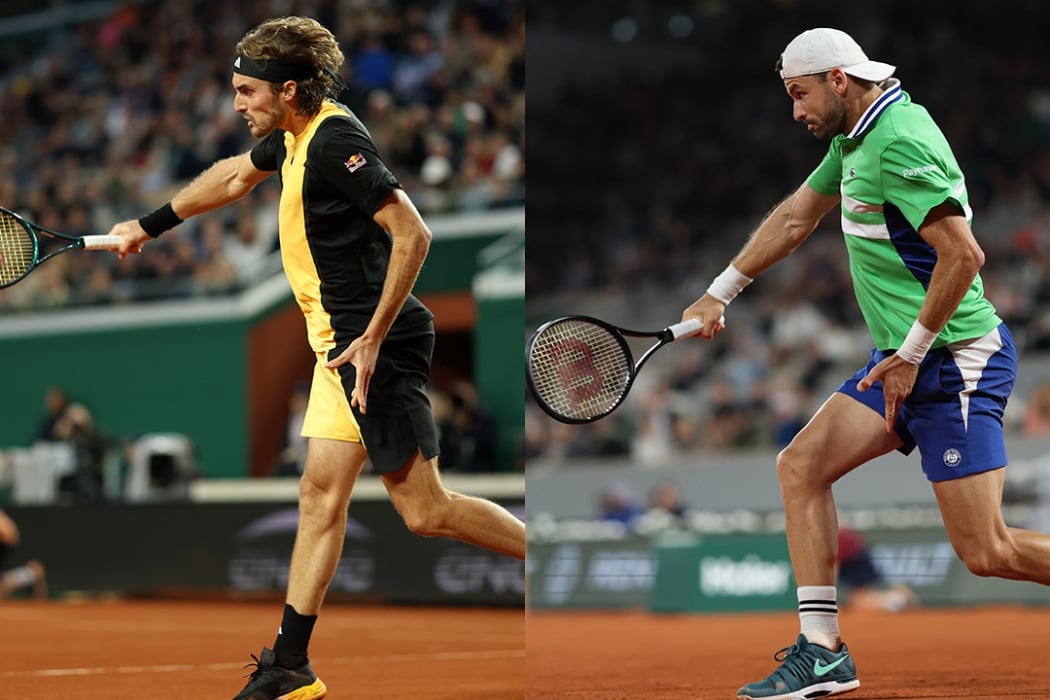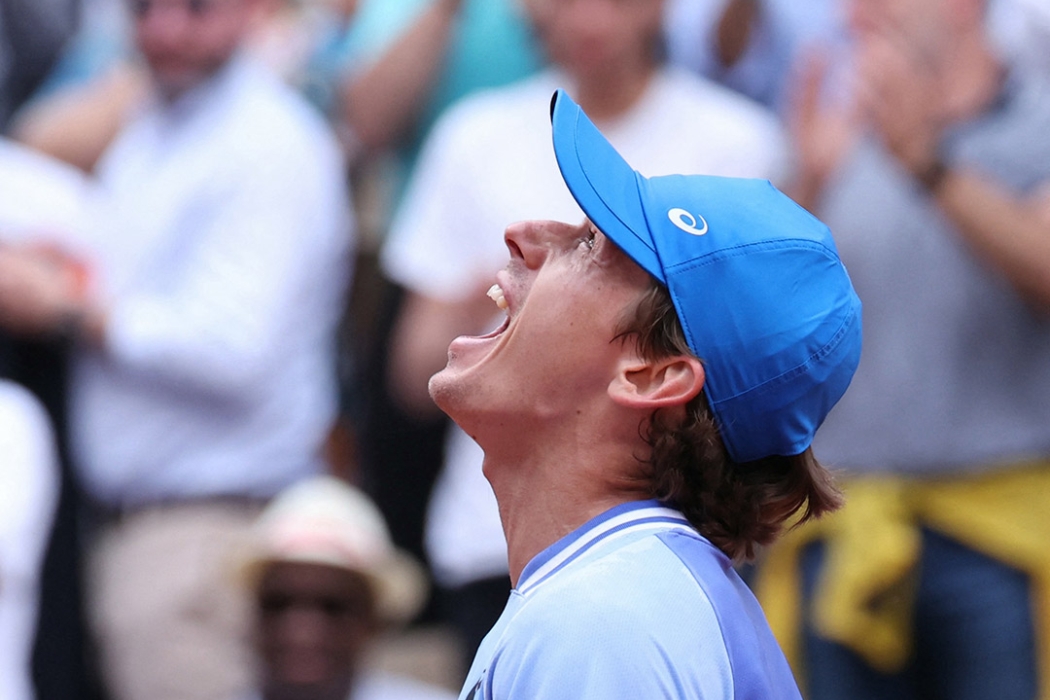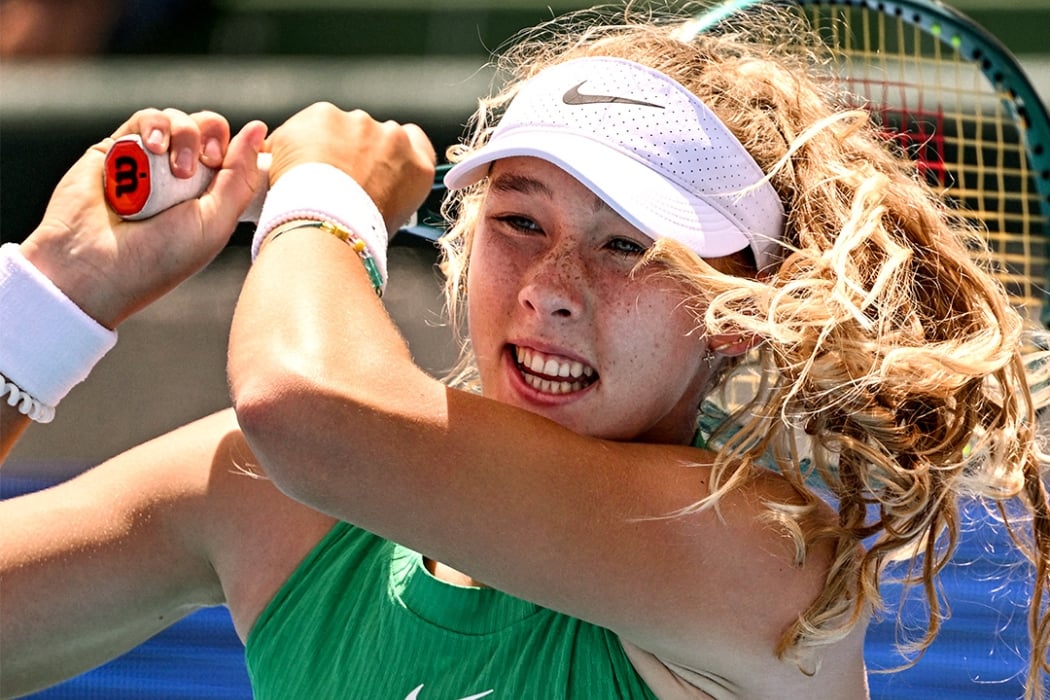Mirra Andreeva continues progressing at the rate of teen phenoms to which she is so often compared.
The teenager, who only recently celebrated her 17th birthday, dissected France’s Varvara Gracheva 7-5 6-2 at Roland Garros to advance to her first major quarterfinal.
ROLAND GARROS: Reigning major champions make their move
Players this young, in this era, don’t typically reach the last eight at Grand Slams.
But Andreeva isn’t typical, and this result felt inevitable.
It was this time last year that Andreeva – a girls’ singles finalist at Australian Open 2023 – made her Grand Slam main-draw debut, after winning three matches in qualifying.
Former Australian pro Nicole Pratt was watching, and told us from her position in Paris: “Andreeva, she's really good. Crazy. She's a baby. Her tennis IQ is very, very, very good."
Andreeva made the third round, pushing sixth-ranked Coco Gauff to three sets.
A few weeks later at Wimbledon, she qualified again, this time advancing to the fourth round, where it took Madison Keys to stop her in three sets.
EXPERT PICKS: Who will win Roland Garros in 2024?
There was another fourth-round showing at Australian Open 2024 – Barbora Krejcikova needed three sets to finally subdue her – and a trip to the same stage here in Paris this fortnight.
That made her the youngest player in 26 years to reach the second week at Grand Slam tournaments on the three different surfaces. The last, in 1998, was Andreeva’s famous countrywoman Anna Kournikova.
This time, however, Andreeva was able to take the next step and record a major breakthrough.
And if you include qualifying wins, she is already a sparkling 19-4 at Grand Slam level.
“Of course it feels great. It was a very special win for me,” said Andreeva, the youngest player in almost 20 years to reach this stage of the tournament.
“It was tough to play against her. She's French player, my good friend. I'm very happy that I managed to win this match.”
Facing a local player at Roland Garros is tough for even the most battle-hardened of professionals, let alone a teenager with limited experience in this situation.
Yet Andreeva’s resourceful mind is not just an asset for selecting the perfect shot to exploit an opponent’s court position. It allows her to psychologically reframe situations, a quality shared by many current champions in the sport.
“I just kind of adjusted it for my advantage. I know now how to use it for myself, not against,” she said of the intermittent boos on Court Suzanne Lenglen.
“I think that I did a good job with it, and it actually was helping me a little bit to fire me up from inside.”
Andreeva, projected to crack the world’s top 30, now confronts one of the toughest tests in tennis – trying to stop Aryna Sabalenka.
The world No.2 has comfortably won both previous meetings with Andreeva and is a flawless 8-0 in major quarterfinals, including 16-0 in sets.
A win would see her become a semifinalist in nine of her past 11 Grand Slam appearances.
Andreeva has also beaten former world No.1 Victoria Azarenka and recent Rabat champion Peyton Stearns to get to this point, but knows the degree of difficulty only rises from here.
“Of course we will add a few adjustments. We will change something, because the way I played last two times didn't work,” said Andreeva, aiming to become the youngest women’s Grand Slam semifinalist since Martina Hingis at the 1997 US Open.
“I feel she's really experienced. She's a player of another level, so I have to be prepared from the beginning.
“I think maybe this helps me a little bit that I'm not really worried about my plan or about the way I will play or about the way my opponent will play.
“I just go and I play and I see what happens. I can adjust something during the match.”
We will see on Tuesday if Andreeva can emulate another teen phenom like Hingis.



